strength depends on how tight the thinest cord is bent, depends on the knot but i have found the if a rope has tight kinks in it that it fails there. have a length of old rope with muliple knots in it that i cant get undone and it keeps getting shorter as the rope fails at the knots i cant get out
Welcome guest, is this your first visit? Create Account now to join.
Welcome to the NZ Hunting and Shooting Forums.
Search Forums
User Tag List
+ Reply to Thread
Results 46 to 60 of 64
-
12-07-2019, 02:46 PM #46Member

- Join Date
- Feb 2016
- Location
- Stewart island / canterbury
- Posts
- 9,193
-
-
12-07-2019, 07:03 PM #47Member

- Join Date
- Jun 2013
- Location
- Middle Earth
- Posts
- 4,540
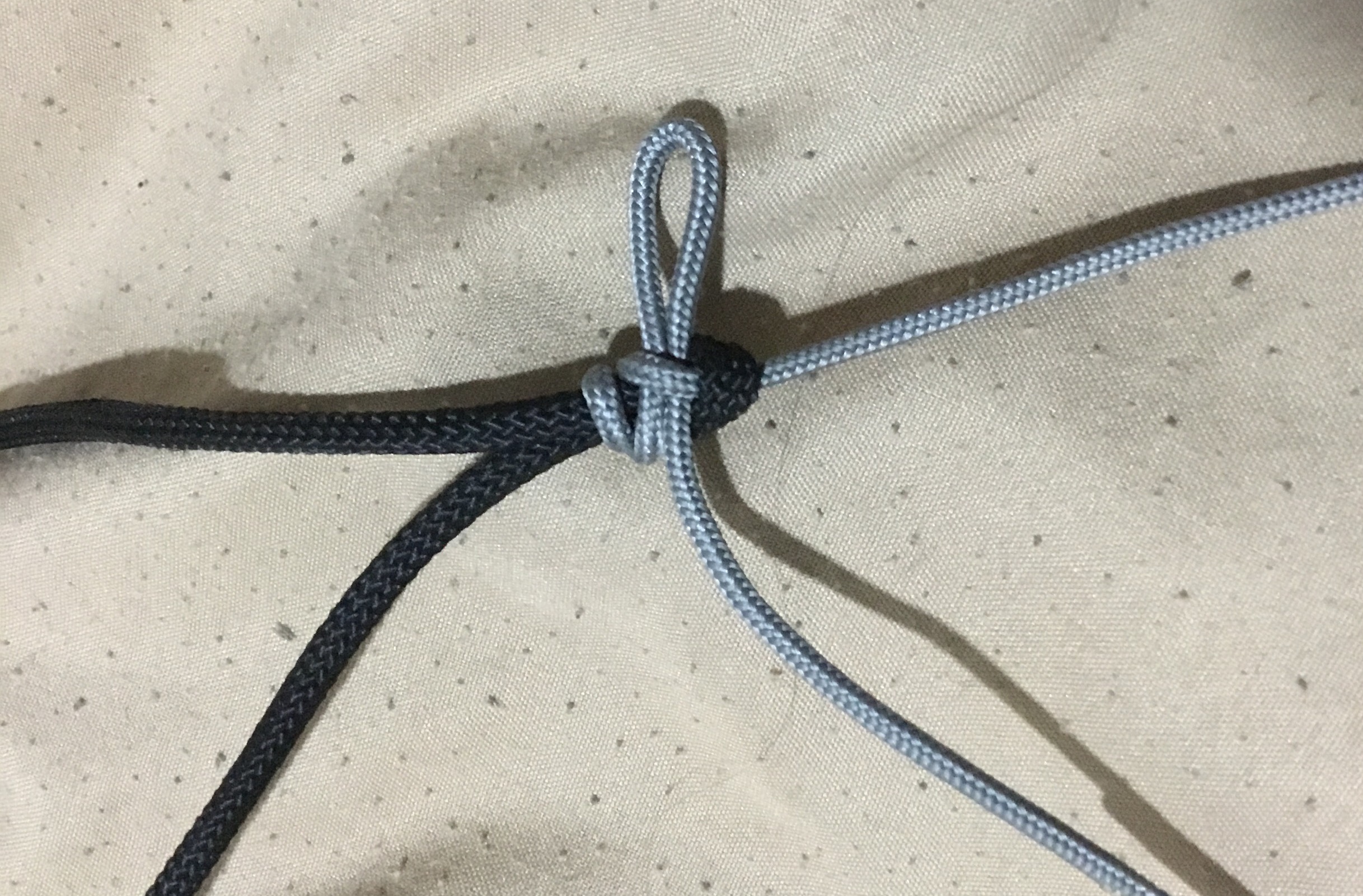
I like that version for quick undoing.
-
12-07-2019, 10:39 PM #48Banned

- Join Date
- Mar 2015
- Location
- North Canterbury
- Posts
- 5,462
-
13-07-2019, 07:39 AM #49OPCz

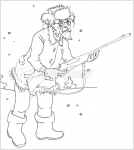
- Join Date
- Jun 2012
- Location
- Nor West of Auckland on the true right of the Kaipara River
- Posts
- 34,667
It takes 43 muscle's to frown and 17 to smile, but only 3 for proper trigger pull.
What more do we need? If we are above ground and breathing the rest is up to us!
Rule 1: Treat every firearm as loaded
Rule 2: Always point firearms in a safe direction
Rule 3: Load a firearm only when ready to fire
Rule 4: Identify your target beyond all doubt
Rule 5: Check your firing zone
Rule 6: Store firearms and ammunition safely
Rule 7: Avoid alcohol and drugs when handling firearms
-
15-07-2019, 10:02 PM #50Member

- Join Date
- Mar 2012
- Location
- Waikato
- Posts
- 2,188
Alpine Butterfly Knot
As recommended by Gibo
Very elegant, the alpine butterfly knot puts a loop in the middle of a rope when you don't have access to the ends, without weakening the rope too much. It can be used to pull on the rope, to attach as person or pack in the middle or as hand / foot loops for climbing the rope. If you load it with body weight, it can go a bit tight to undo. It's not used all that much, not really an essential knot for hunters, but very nice to have.
Rope without ends. Normally you wouldn't put an "in use" climbing rope down on as greasy old bench like this but this rope had been retired for many years.
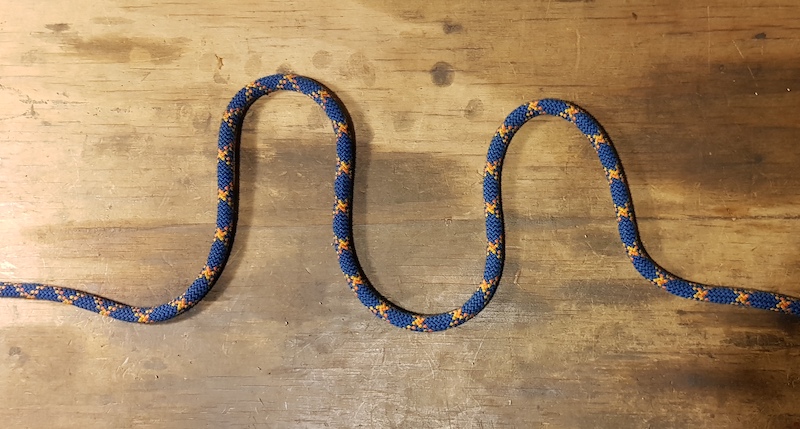
Make a double twist.

Take the bight down behind the twist.
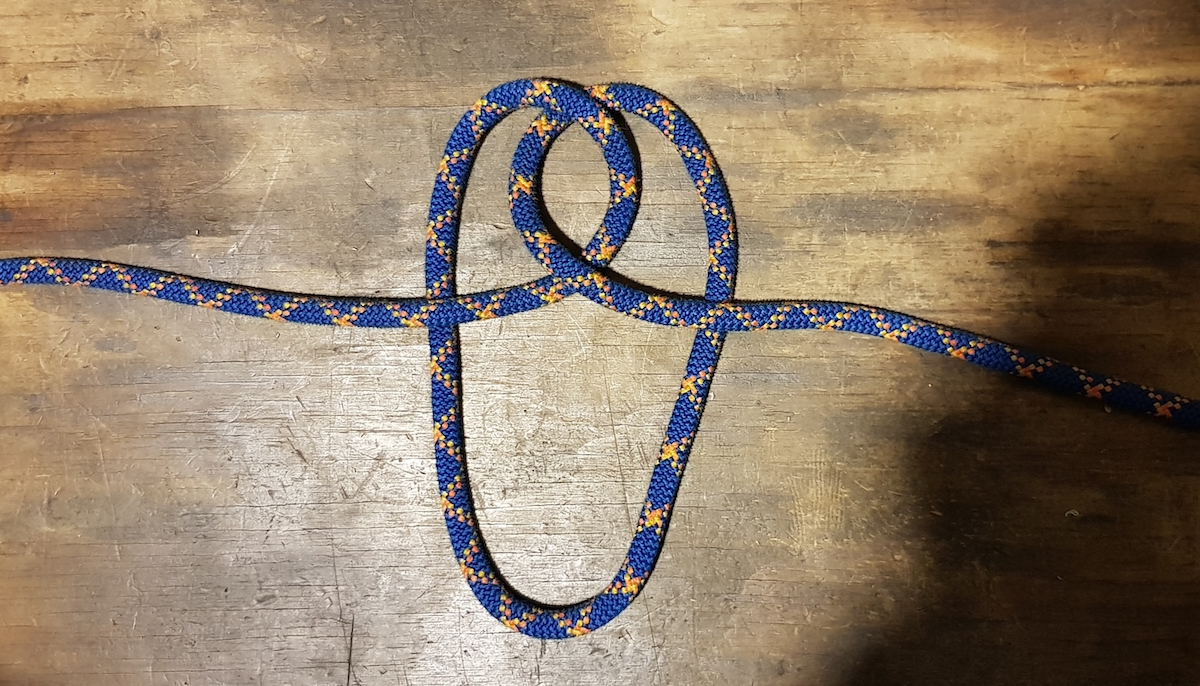
Feed the loop up through the space in the twist.

Here is the form of the knot displayed but not tightened.
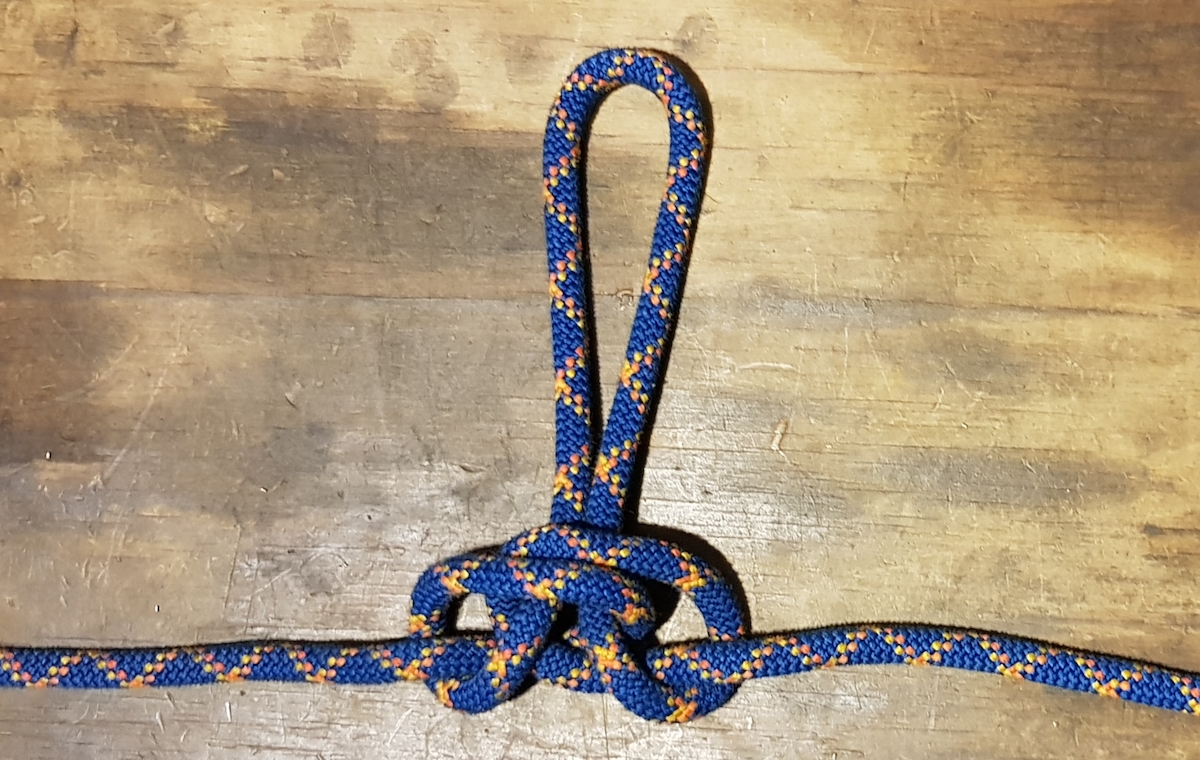
Here it is tight showing the front, with the loop upwards. Each end of the rope forms a turn around the loop.
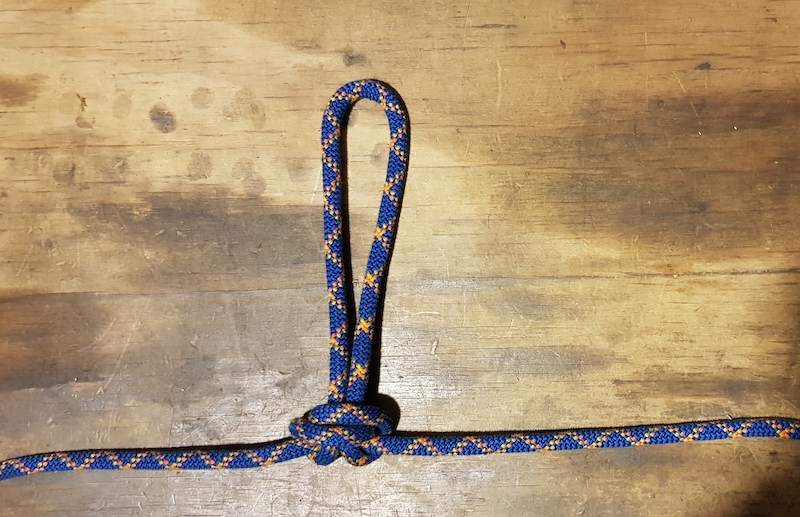
Here is the back side of it, showing small turns on each side.
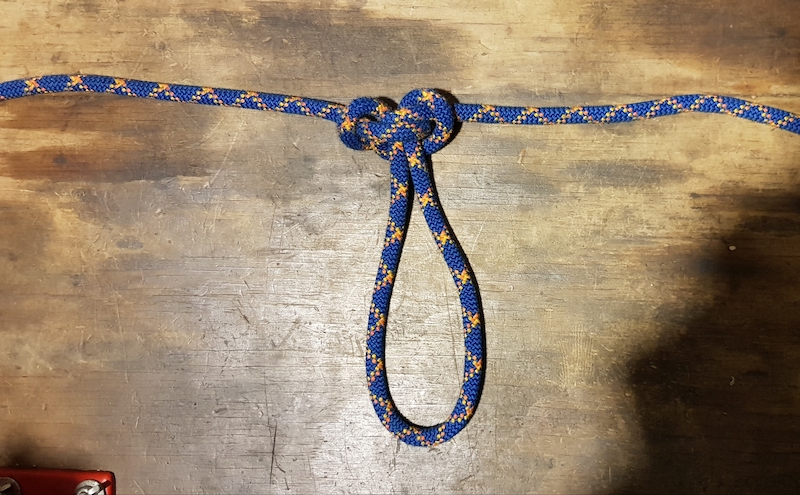
You can load it from the right ...

or the left.
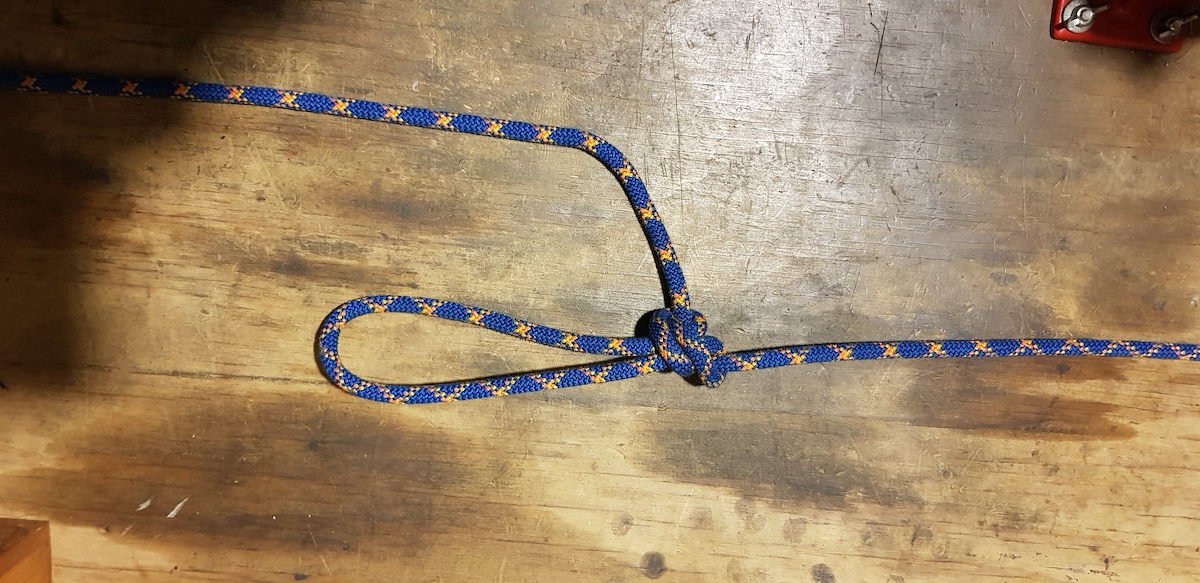
Here are some clearer sketches showing the key stages. This one from the 1987 NZMSC Mountaincraft manual 20
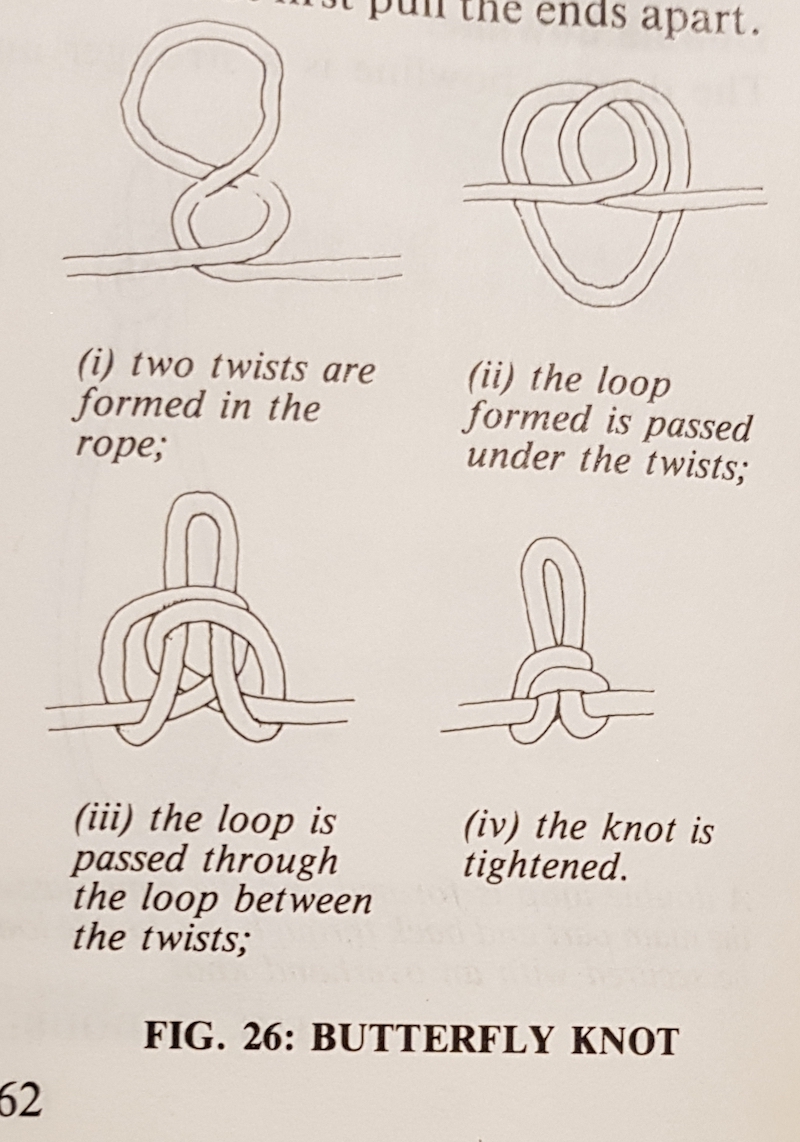

and from Mountaineering The Freedom of the Hills 2003

-
26-07-2019, 08:12 PM #51Member

- Join Date
- May 2019
- Location
- Nelson
- Posts
- 338
Good topic thanks.
I nearly always have a bit of cord in my pocket. You just never know when you'll have the opportunity to use it. And naturally I am seldom without a pocketknife.
I take cordage with me everywhere. I have quite a stock of it at home. I've found the best places to get it from are the companies that supply commercial fishermen. Here in Nelson I go to Quality Equipment, Hampidjan or Bridons. It is generally much cheaper in one of these places compared to hardware stores (although you mostly have to buy a full spool of it). I like braided nylon cord in a variety of sizes. It is nice to handle, doesn't kink, it stretches to absorb shocks... and it is strong and reliable with reasonable resistance to ultraviolet damage.
Dang Micky Duck, you used the word 'Pikau'. It is something I don't hear much nowadays. I can't be sure, but it may have been a hunting writer like Barry Crump or Rex Forrester who first introduced me to the pikau. I've used these for years. The early ones were sacks with a stone in each bottom corner to help hold the rope (I think the aforementioned hunting writer suggested that a potato and an onion were a good idea for the same job). An acquaintance made me a beauty out of light canvas.... and I've made a couple out of polarfleece type material which is pretty darn strong... and quiet when a branch brushes it. My older fleece pikau has a hole in it now, but it has lasted me maybe 12 years. My recent pikaus have webbing straps instead of plain rope.
Here are three pikaus:

When I'm hunting I will generally have a couple of decent lengths of nylon braid with me.... and these might have a breaking load of 350 or 400 kg. And if I'm hunting somewhere when I might want to drag a whole animal I will take a bit of relatively thick braid that won't cut into me as much when I'm pulling on it. I'm not your average pig hunting magazine cover boy. I seldom lift a whole carcass. I will drag one if the trip is short and is level or goes downhill. Otherwise, if possible, I butcher the whole thing on the spot and stuff the meat into a pillowslip or plastic bags (yes, I've been made aware of the risks of putting warm meat into plastic bags) and carry it home in my pikau.
I sometimes also carry two light pulleys with me. These may enable me to pull an animal to a position where I can work on it (rather than on a steep hillside for instance), or I may even be able to hoist it into a tree to make it easier to skin it and cut it up. A single pulley can give you some mechanical advantage if you rig it right, but sometimes you need a lot of cord to utilise it. Below is a photo of a pig that I was pulling into a better spot to work on it. The cord I used was strong, but thin. In a case like this I might wrap the cord around a strong stick to make a comfortable handle to heave on. One end of the cord was tied to a tree... it passed through the pulley and I was pulling on the other end. It is hard to see, but there is a relatively thin bit of cord that connects the pulley to the pig. I was probably overloading this rig, but because the pig wasn't going to drop on anyone if something broke, there wasn't a significant risk.

Here are a couple of knots I like. The first one, I think, is called a slipped buntline hitch. I like it because when you pull the end of the rope, the knot virtually disappears if you've tied it right.

And here is a nice-looking knot that I use to join two similar cords. It is called the Zeppelin bend. In most cases where it hasn't been under a huge load, it is relatively easy to undo.

When I'm tying the Zeppelin bend, I find it helpful to remind myself that both the initial loops are formed in a clockwise direction... but one tail goes under the main rope, and the other tail goes over the main part of the rope. You could tie this with loops going in an anti-clockwise direction, but the point is they have to be the same for the knot to be correct.
I also use cord as a casual rifle sling for my rifles which don't have slings. I just form a noose at each end of a nice soft bit of cord and keep it in my pocket. That way I can have a sling when necessary, but I can also quickly remove it when moving through scrub. Sometimes the rifle will have to be slung upside down to be secure with a rope sling like this. It isn't a wonderfully descriptive picture, but below is a photo of my Rossi levergun hanging by its nylon cord sling. The sling goes around the wood just behind the lever, and the front noose pulls tight on the barrel. The billy goat also has nylon cord attached to it.

-
27-07-2019, 10:22 AM #52Member

- Join Date
- Feb 2017
- Location
- Jafa land
- Posts
- 5,526
awesome! those are some very useful knots coote!
-
27-07-2019, 06:48 PM #53Member

- Join Date
- May 2019
- Location
- Nelson
- Posts
- 338
Sometimes I carry a small sheath knife in my pocket.... the Mora knives with their clip are good for that. Mostly I like to have a knife on my belt. A knife on your trouser belt can sometimes be difficult to move to a different position quickly. I find it more convenient to use a cord around my waist to hang the knife from. I can quickly slide it around my body to be in the most convenient position... and every knife can have its own cord.
I've made quite a few knife and machete sheaths from black, low-density polypipe (alkathene). I typically heat it to around 115 degrees in the oven, then force a dummy knife into it and squash the blade area between a couple of boards using G-clamps. These sheaths won't get used to make advertising images for 'The American Rifleman', but they are sturdy, safe, hygienic and inexpensive. I like to keep my knife and sheath clean, and i can use a bottlebrush to scrub it out in the kitchen sink.
The cord belt has a Celtic Button Knot at one end... and on the other end is a bit of smaller cord which has a Dutch Bowline designed to fit over the Celtic Button Knot... and on the other end it is attached to the main belt (green) cord with a Prusik Loop. This loop easily slides along the cord to adjust the fit of the 'belt'. There is a Double Overhand Stopper Knot which gives me something to grab when adjusting the Prusik Loop.
The green belt cord was made long enough to tie around the sheath in the form of a Turks Head. Hidden at the back of the Turks Head is a bit of stainless wire which passes through the pipe and around the cord to stop the cord slipping.
There is a heap of info on the internet showing how to make the various knots. The Dutch Bowline differs from the standard Bowline in that the tail end is on the outside of the loop. Nowadays I have come to prefer the Yosemite Bowline which is a neater-looking design.
I've never had one of these belts come undone while wearing it.

-
26-09-2019, 06:37 PM #54Member

- Join Date
- Sep 2019
- Location
- Taupo
- Posts
- 19
Great ideas and photos. For day hunts I avoid paracord for any application where I will cut it and waste it. I have found manilla style gardening string and twine a cheap and environmentally friendly option. May not hang a whole animal but it can hang the quarters of a decent red stag to cool down.
BTW not many people mentioned the round turn and two half hitches which is good as it can be untied underload.
Bowline, Clove hitch, round turn and two half hitches, and truckers will allow you do most things in the bush.
-
16-04-2025, 04:12 PM #55
I thought I would re-activate this thread from 2019 having missed the opportunity to post at the time. I can’t remember how to tie many knots, and not if they are seldom used. A dozen knots is about my limit. A long as I know how to tie something roughly appropriate when needed, I figure that is sufficient. It helps that my knot requirements are pretty basic. I can’t afford to double up on function by learning two knots that don’t have a significant point of difference.
So with this in mind, I recently spent a bit of time re-visiting a few knots and refining what should make an updated shortlist to memorise. I’ve ended up picking a set of knots that I think provide good functionality–to–complexity for each task, along with giving my reason/s for using them. Most have been covered by other members in earlier posts — good knots are clearly worth knowing.
Basic Knots
Half Hitch. Often several half-hitches are all that is required. A knot essential for locking off a line. Regularly used here for tying the tarp down over the trailer.
Reef Knot. Another essential knot, mainly used for what is apparently called “binding”— although I see in the world of knots there are also “whippings” and “seizings”, who would have thought, though I now see some earlier posts mention these? What is clear from very little reading about the Reef Knot is that this should be tied in preference to the Granny Knot, being less prone to slipping. The explanation being because when the loops squeeze the tails and the standing ends together, they do this with the pairs running parallel together on both sides, meaning more friction. In a Granny Knot the tails and the standing ends cross at right angles, so less contact area. This difference would likely be most noticeable with something like monofilament where the line retains its circular cross–section resulting in just points of contact in the Granny.
Adding an extra initial turn when binding will hold tension better while the second half of the knot is applied, and this then becomes the Surgeon’s Knot.
When both tails are formed into quick-release “bights”, the Reef Knot becomes the Shoelace Bow or Double–Slipped Reef Knot. So really it seems everyone already knows how to tie a Reef Knot. Again, a Bow tied as an extension of a Reef Knot with bights should be more secure than a Granny Knot tied with bights, though this seems to be more noticeable with some types of shoe laces. If this is new information, you may on consideration review the way you tie your shoes after all these years — as I had to.
End Loop Knots
My knot–count–reduction strategy requires a single non-slipping knot for forming both a loose loop and also for tying around anchor points but without cinching up. If climbing was my thing, then the Figure–Eight would have to be my end loop knot. My life doesn’t routinely hang on the reliability of my loop knots though. So other than occasionally using the F8 as a stopper knot I discarded it and also the Hansen Knot as options, since when being tied around a captive anchor point they both need a pre-tied knot to get started rather than using a one-step tying process.
I’m not keen to pass over the Bowline after so many years of use and the resulting familiarity with tying it. A strength over the Figure–Eight — but also a known weakness — is being able to easily work the knot loose to untie. For nearly all applications I have for a loop knot the Bowline has been fine, but this potential instability when tension comes on and off with some types of rope can be a problem. Just recently I had @c-dogs printed lens cover he’d sent me for the Sytong become detached twice from the monocular when in use, losing the bowline once at each end when the cover was dangling on 1.5mm venetian blind cord. The other less than ideal feature of the standard Bowline is having the tail finish inside the loop, though this can be fixed with the Dutch Bowline or the Cossack Bowline variations.
So I’m sticking with the basic Bowline for my choice of a loop, but then need a way of adding an extra layer of security to the knot on the occasions needed rather than changing to a different but inherently more secure knot. Ideally this is added with just one additional step. Options given consideration in the past were extending the Bowline to the Double Bowline, adding a Yosemite Finish, a Rethreaded Bowline, and the End Bound Single Bowline (EBSB). Any of these also have the added benefit of moving the tail out of the loop to instead exit parallel to the standing line.
The extra tie–off I now remember is to form the Scott’s Locked Bowline.
Joining Two Lines
I can’t really get away with just one knot for this task. My starting preference is for the Zeppelin Bend over the Hunter’s Bend because it can be untied relatively easily. The only real issue with either being the direction of the tails if the finished rope has to be coiled. It’s a great looking knot though and good for tying temporary loops.
Permanent joining of two ropes can be with the Double Fisherman’s as that fixes the problem with the direction of the tails for later maintenance and storage of the lengthened rope. For making permanent loops out of cord when needed, say for Prusik loops.
I think the Sheet Bend should be included in the list as a knot staple — for mixed rope sizes, and of course for securing sheet materials (and for hanging pillow cases filled with venison), but I add the extra turn for a Double Sheet Bend — easy to add, more secure we are told, so why not?
The last bend on my list , but I only use it with fishing monofilament leaders, is the Blood Knot, and where the split of number of turns on each side tends to be pretty variable depending on where the “opening ” for the tails ends up appearing in the twisted pair — and occasionally it takes seemingly forever to manipulate the lines into offering up such an opening for the tails to be fed through, which isn’t ideal under pressure, hopefully while the targeted trout continues to feed on, oblivious of such difficulties.
Mid-Rope Loop
This can also can be used for isolating damage in a rope or perhaps for shortening (similar function to the Sheep Shank though nowhere near as tidy), and the Alpine Butterfly is chosen here over the Double Dragon, because it’s symmetrical. As for the actual tying of this knot: using the loose figure– of–eight layout for tying the Butterfly seems to become rather tricky with springy rope, as any torsion down the rope has a tendency to stop the loops from staying in place. In this case it is certainly easier to use the method where the non-tying hand acts as a former on which to wrap and hold the loops. A link to one of the many hand–wrap method tutorials here:
https://www.animatedknots.com/alpine...rfly-loop-knot
I also use the Alpine Butterfly to replace the basic Slip Knot when securing items with a Trucker’s Hitch, because the loop of the Alpine Butterfly is secure in either direction so it saves figuring out which way the normal slip knot needs to be tied — a slip knot only works when tied in one of the two orientations in the Trucker’s Hitch.
Attaching a Fishing Hook
Uni Knot versus Clinch Knot? The Clinch is easier to tie as the either the hook can be rotated or the working end repeatedly twisted around the standing to create the required turns. This rather than needing to thread the line through an opening multiple times, if that makes sense? Specifically with monofilament line both types of knot apparently end up having a similar strength, so I use the Clinch Knot, and occasionally tuck the tail back through the loop to form what is apparently call an Improved Clinch Knot.
Static Hitch Knots
I don’t really have any applications for a binding knot or static hitch knot where tension will be applied at right angles to the lie of the anchor point. It always seems easier – at least for the initial tying rather than untying – to just pass the rope only once around the object being secured to, and then instead tie some sort of tensioning or slip knot back on the rope itself and then cinch this up.
The Clove Hitch wouldn’t be under consideration anyway, being short of a turn in my view to be grouped with secure hitches. There are plenty of clips online showing the Clove Hitch being worked loose by jiggling the standing end. The Constrictor is discarded — undeniably secure but too difficult to undo. It comes down to choosing between a Rolling Hitch, a Groundline Hitch or a Snuggle Hitch. Hitches where the tail is trapped under the first turn of the standing end rather than under a secondary turn seem more secure, and if I had to limit myself to memorising just the one hitch knot, choosing between the the Groundline/Spar/Bag Hitch or Snuggle Hitch, the Snuggle Hitch — tied with an extra turn as an extension to the Clove Hitch — would be my choice. It doesn’t make the list but gets an honourable mention nonetheless.
Friction Knot
Now these I do use! For forming slide–and–grip adjustable loop knots for tensioning tent and tarp lines, and where the knots are tied back around the standing end of the line.
Simple friction variants for guylines are the Magnus Hitch, Taut Line Hitch, Midshipman’s Hitch, and the Adjustable Grip Hitch. Research seems to point to the Midshipman’s biting a little more, but these are all pretty functional in my experience when tied in flexible cord, and conversely all pretty useless with more rigid rope. In this case a separate cord loop tied with a Prusik is probably called for.
Looking at some more complex friction knots, I have found dressing the Farrimond Knot to get a properly functioning knot too tricky for me, but others like it. Blake’s Hitch seems pretty secure but with extra complexity. From all of these the Midshipman’s is the one to make the list. Does the job, easier to tie.
The other type of friction knot I might only occasionally need, are the ones that take lengthwise strain when wrapped around a pole or post. I’m thinking of the Pipe Hitch, Icicle Hitch, and the Gripping Sailor’s Hitch. They all seem much the same; five lays of the rope around the item and then with different tie-offs. I’ll look these up when needed.
However, because the Prusik Knot is so versatile, it gets tacked on the end of the list. It will still work when the main line is a more rigid material, so has cross-over between the two types of friction knot described above, and unlike all the others is bi-directional.
List
Half Hitch
Reef knot (and with double bights = shoelace bow)
Bowline (and Scott’s Locked variation)
Zeppelin Bend
Fisherman’s Bend
Double Sheet Bend
Blood Knot
Clinch Knot
Alpine Butterfly
Midshipman’s Hitch
Prusik Hitch
Honourable mentions: Snuggle Hitch, Double Dragon
-
16-04-2025, 05:39 PM #56Member

- Join Date
- Nov 2014
- Location
- Central Otago
- Posts
- 2,342
A bit of paracord is always useful. If you have to use ropes it is not hunting, it is mountaineering!
-
16-04-2025, 05:42 PM #57
-
16-04-2025, 09:58 PM #58
-
16-04-2025, 10:45 PM #59Member

- Join Date
- Dec 2021
- Location
- Tauranga
- Posts
- 6,019
Modern kevlar core yachting lines are very good, expensive but 6mm is good for 1000Kg. Not very bulky and quite light for size... Just very hard if you are needing to tie it onto yourself for whatever reason.
-
16-04-2025, 11:30 PM #60Member

- Join Date
- May 2018
- Location
- Stewart Island Rakiura
- Posts
- 231
Now and then its handy to know how to splice ropes. 3 ply anyway. End splice and eye splice.
Similar Threads
-
Taupo hunting - advice or a hunting buddy
By StagDown in forum Game Bird HuntingReplies: 4Last Post: 14-05-2018, 03:54 PM -
Gun for first time deer hunting/wallaby hunting
By mehtat in forum Firearms, Optics and AccessoriesReplies: 41Last Post: 31-03-2017, 07:29 PM -
Rope 101
By 223nut in forum Gear and EquipmentReplies: 15Last Post: 11-11-2016, 03:13 PM
Tags for this Thread
Welcome to NZ Hunting and Shooting Forums! We see you're new here, or arn't logged in. Create an account, and Login for full access including our FREE BUY and SELL section Register NOW!!





 67Likes
67Likes LinkBack URL
LinkBack URL About LinkBacks
About LinkBacks




 Reply With Quote
Reply With Quote


Bookmarks